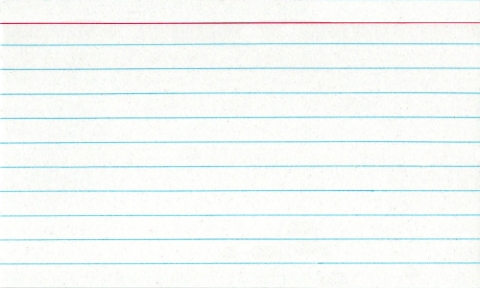Steps in Preparing a Presentation
Planning Your Presentation
 Preparing a presentation can be an overwhelming experience if you allow it to be one. The strategies and steps below are provided to help you break down what you might view as a large job into smaller, more manageable tasks.
Preparing a presentation can be an overwhelming experience if you allow it to be one. The strategies and steps below are provided to help you break down what you might view as a large job into smaller, more manageable tasks.
Step 1: Analyze your audience
The first step in preparing a presentation is to learn more about the audience to whom you'll be speaking. It's a good idea to obtain some information on the backgrounds, values, and interests of your audience so that you understand what the audience members might expect from your presentation.
Step 2: Select a topic
Next, if possible select a topic that is of interest to the audience and to you. It will be much easier to deliver a presentation that the audience finds relevant, and more enjoyable to research a topic that is of interest to you.
Step 3: Define the objective of the presentation
Once you have selected a topic, write the objective of the presentation in a single concise statement. The objective needs to specify exactly what you want your audience to learn from your presentation. Base the objective and the level of the content on the amount of time you have for the presentation and the background knowledge of the audience. Use this statement to help keep you focused as you research and develop the presentation.
Preparing the Content of Your Presentation
Step 4: Prepare the body of the presentation
After defining the objective of your presentation, determine how much information you can present in the amount of time allowed. Also, use your knowledge about the audience to prepare a presentation with the right level of detail. You don't want to plan a presentation that is too basic or too advanced.
The body of the presentation is where you present your ideas. To present your ideas convincingly, you will need to illustrate and support them. Strategies to help you do this include the following:
- Present data and facts
- Read quotes from experts
- Relate personal experiences
- Provide vivid descriptions
And remember, as you plan the body of your presentation it's important to provide variety. Listeners may quickly become bored by lots of facts or they may tire of hearing story after story.
Step 5: Prepare the introduction and conclusion
Once you've prepared the body of the presentation, decide how you will begin and end the talk. Make sure the introduction captures the attention of your audience and the conclusion summarizes and reiterates your important points. In other words, "Tell them what you're going to tell them. Tell them. Then, tell them what you told them."
During the opening of your presentation, it's important to attract the audience's attention and build their interest. If you don't, listeners will turn their attention elsewhere and you'll have a difficult time getting it back. Strategies that you can use include the following:
- Make the introduction relevant to the listeners' goals, values, and needs
- Ask questions to stimulate thinking
- Share a personal experience
- Begin with a joke or humorous story
- Project a cartoon or colorful visual
- Make a stimulating or inspirational statement
- Give a unique demonstration
During the opening you want to clearly present your topic and the purpose of your presentation. Clearly articulating the topic and purpose will help the listeners focus on and easily follow your main ideas.
During the conclusion of your presentation, reinforce the main ideas you communicated. Remember that listeners won't remember your entire presentation, only the main ideas. By reinforcing and reviewing the main ideas, you help the audience remember them.
Practicing and Delivering
Step 6: Practice delivering the presentation
Most people spend hours preparing a presentation but very little time practicing it. When you practice your presentation, you can reduce the number of times you utter words and phrases like, "um," "well," and "you know." These habits can easily diminish a speaker's credibility. You can also fine-tune your content to be sure you make your most important points in the time alloted.
In addition to planning the content of your presentation, you need to give advanced thought to how you want to deliver it. Do you want to commit your presentation to memory, use cards to guide you, or read from a script? Or, you might want to use a combination of methods. To help you decide, read the advantages and disadvantages of the four delivery methods described below.
Speaking from Memory

A distinct advantage of speaking from memory is your ability to speak to the audience without relying on notes or a script. This allows you the flexibility to move away from the podium and to maintain eye contact with the audience. However, speaking from memory has disadvantages, too. Presentations from memory often sound rehearsed and the possibility exists that you'll forget an important point, present information that's inaccurate, or completely lose your train of thought. If you decide to deliver your presentation from memory, have notes handy to jog your memory just in case!
Speaking from Notes

Many people like to speak from notes. Typically these notes are either on cards or paper in outline form and contain key ideas and information. If you are using an electronic presentation tool, you may be able to include your notes in the presentation itself. The benefit of delivering a presentation from notes is that you sound natural rather than rehearsed and you can still maintain relatively good eye contact with the audience. The down side is that you might not express your key ideas and thoughts as well as you may have liked had you planned your exact words in advance.
Speaking from Text
.jpg)
Speaking from text involves writing your speech out, word for word, then basically reading from the text. As with speaking from memory, an advantage of this method is that you plan, in advance, exactly what you're going to say and how you're going to say it. A disadvantage is that you might appear to the audience to be stiff or rehearsed. You will need to make frequent eye contact and speak with expression to maintain the audience's interest.
Using a Combination of Methods
You may find the best method to be a combination of all three. For instance, experts suggest you memorize the first and last ten minutes of your talk so that you can speak flawlessly and without notes. Notes may be suitable for segments of your presentation that you know very well, for example, relating a personal story. Finally, speaking from a text might be appropriate when you have quotes or other important points that you want to make sure you communicate accurately and completely. You can make a smooth segue to written text by saying something like: "I want to read this quote to you verbatim, to ensure that I don't distort the original intent."


